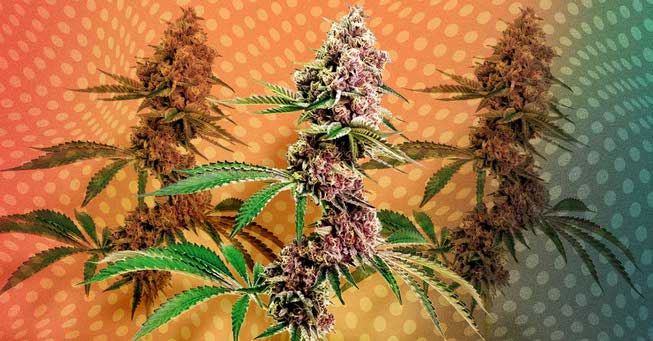
Sam Steinborn
Bluebird’s COLA is an indica-dominant hybrid.
Thursday, June 22, 2023 | 2 a.m.
Powered by Deep Roots Harvest
There’s a common belief that higher THC percentage is a characteristic of higher-quality cannabis and more potent consumer experiences. While THC percentage does contribute to potency, there are many other factors that affect an individual’s reaction, and consuming a higher-THC strain does not necessarily guarantee that you’ll feel more medicated than when consuming lower-THC strains. Here’s a look at THC percentages in flower and what they may mean for you.
What contributes to cannabis potency?
Cannabis research is an active topic of study, and as more data is collected, psychoactive effects and potency are becoming better understood. In 2020, the University of Colorado at Boulder published a study indicating that THC concentration does not correlate with the intoxication level of a strain. Observing high-potency concentrates with more than twice the THC of flower, researchers observed that among regular consumers, the blood levels of THC were significantly higher but the level of impairment was similar to the group using flower with less THC.
We’re conditioned to assume that more means more intense effects, but is that always the case with cannabis? The THC concentrate study calls this belief into question. Researchers posit that once cannabinoid receptors in the brain are full, they may stop being as receptive to any additional cannabinoids entering the body. This doesn’t mean that THC percentage doesn’t matter, but it could mean that it stops mattering past a certain point for some consumers.
The role of cannabinoids
Unlike alcohol with only one active ingredient, cannabis has more than 100 cannabinoids that may contribute to potency and intoxicating effects. We most often hear about THC and CBD, but there are many other cannabinoids that contribute to the experience, and each strain has its own unique cannabinoid combination. Further, terpenes—the plant oils that create smell and taste—have many known physiological effects. The holistic makeup of a strain contributes to how medicated you’ll feel, so experiment with all types, not just high-THC options.
Why do cannabis strains have higher THC today?
Cannabis is more potent now than ever before for a variety of reasons, including precise cross-pollination methods, better growing practices and optimized cultivation techniques. Though many factors contribute to the intoxicating effects of cannabis, high-THC strains are popular because some individuals may experience their effects more intensely while using less product. For those looking for an elevated experience, infused prerolls are also a great way to increase the THC volume while still using flower.
Benefits of low-THC strains
Low-THC flower has many benefits. Consumers focused only on THC percentage may miss some of the incredible flavors and effects of terpenes and other cannabinoids found on the spectrum of different cannabis strains. Some report experiencing less anxiety with lower THC flower as well. Many people also choose to cook with lower THC options, as they may be less expensive, and when making edibles, you’ll need a higher volume of product than you would for other forms of consumption.
